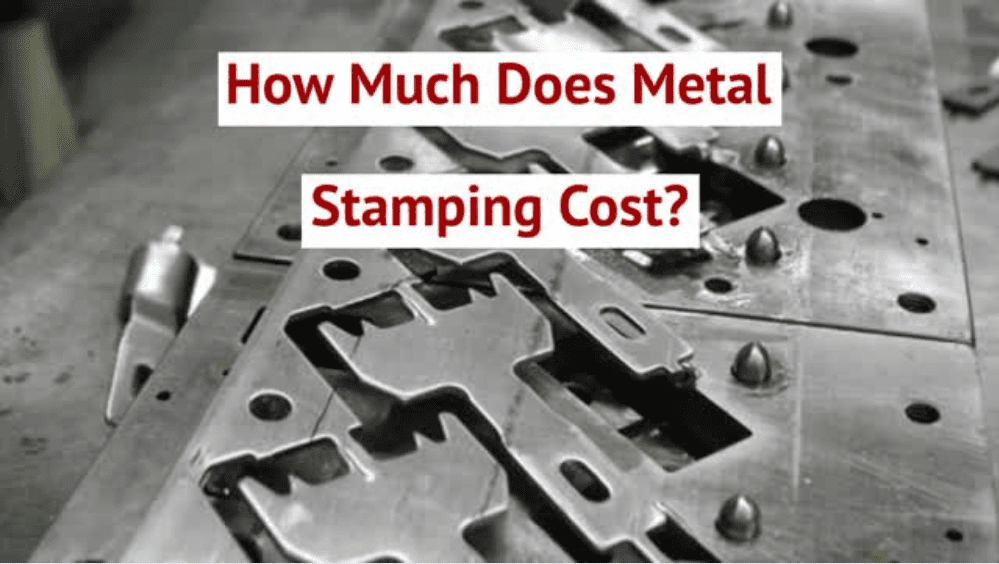Comprehensive Guide to Metal Stamping: Techniques, Applications, and Benefits
The Evolution of Steel Marking Processes: Advancements and Applications
The realm of metal marking processes has actually experienced a transformative journey noted by constant development and adaptation to fulfill the demands of modern-day commercial techniques. The applications span throughout a range of markets, each benefiting distinctly from the developments in steel marking procedures.
Typical Steel Marking Strategies
Traditional metal marking techniques have long been the foundation of manufacturing procedures in numerous markets as a result of their effectiveness and precision. The procedure involves forming a steel sheet or coil into a wanted shape by pressing it between a die and a punch. This approach is extensively utilized for producing big amounts of get rid of high accuracy at a rapid pace.
Among the essential advantages of standard metal stamping methods is the ability to preserve limited resistances, making sure that each part satisfies the required requirements regularly. This level of precision is crucial in markets such as automobile, aerospace, and electronics, where also minor discrepancies can result in considerable concerns.
In addition, standard steel stamping techniques supply cost-efficient solutions for mass manufacturing compared to other manufacturing techniques. The capability to stamp components in fast sequence reduces production time and minimizes labor prices, making it an appealing alternative for services aiming to enhance their manufacturing processes.
Development of High-Speed Stamping

Among the crucial advantages of high-speed stamping is its capacity to keep accuracy and uniformity also at sped up handling speeds. This precision is vital in sectors where tight resistances and intricate designs are needed. In addition, high-speed marking permits for the processing of a wide variety of materials, consisting of aluminum, stainless-steel, and copper, more broadening its applicability across numerous sectors.
Furthermore, the emergence of high-speed marking has made it possible for manufacturers to fulfill the growing need for complicated components in sectors such as auto, aerospace, and electronic devices (Metal Stamping). By leveraging the rate and precision of high-speed stamping innovation, companies can boost their competitiveness in a quickly evolving market landscape
Developments in Tooling Innovation
With the advancement of high-speed marking enabling improved precision and effectiveness in metal creating procedures, the field of steel stamping has seen significant innovations in tooling innovation. Tooling technology plays an essential role in steel stamping procedures, influencing aspects such as product quality, manufacturing speed, and total cost-effectiveness. One key innovation in tooling modern technology is the development of intelligent tooling systems that incorporate sensing units and checking gadgets to give real-time information on the marking process. These systems can discover issues such as device wear or misalignment, permitting instant adjustments to preserve ideal performance.
In addition, developments in materials science have caused the creation of tooling products with improved durability, use resistance, and thermal conductivity. By making use of these innovative materials, tooling makers can produce dies and molds that withstand the high stress and temperature levels associated with steel marking procedures, site link leading to longer device life and improved manufacturing efficiency. In addition, advancements in tool layout, such as using simulation software application and additive official source production methods, have actually allowed the production of complex tooling geometries that were formerly challenging to produce. On the whole, these innovations in tooling innovation have actually revolutionized the metal stamping market, permitting producers to accomplish higher degrees of precision, performance, and price savings.
Integration of Automation in Stamping
As automation continues to reshape the landscape of metal marking processes, the assimilation of automated systems has actually ended up being progressively common in modern manufacturing centers. Automated systems supply numerous advantages in steel marking, consisting of increased effectiveness, improved precision, and boosted safety and security. By incorporating automation right into stamping procedures, suppliers can minimize cycle times, minimize material waste, and maximize manufacturing throughput.
Among the crucial components of automation in stamping is using robot arms for tasks such as product handling, component manipulation, and high quality inspection (Metal Stamping). These robotic systems can do repetitive and labor-intensive tasks with rate and accuracy, maximizing human drivers to concentrate on more intricate procedures. In addition, automation permits real-time monitoring and modification of stamping procedures, bring about greater overall procedure control and quality control
Moreover, the assimilation of automation in marking makes it possible for makers to achieve consistent part top quality, meet tight tolerances, and boost general efficiency. As innovation remains to advance, the duty of automation in metal marking procedures is expected to increase further, driving technology and effectiveness in the production industry.
Applications Across Diverse Industries
Including steel marking procedures across varied industries showcases the flexibility have a peek at these guys and versatility of this manufacturing technique. From auto to aerospace, electronic devices to clinical devices, steel stamping plays a vital function in the production of a wide variety of elements. In the auto industry, steel stamping is used to develop detailed components such as body panels, framework parts, and engine parts with high accuracy and effectiveness. The aerospace sector counts on metal stamping for producing lightweight yet durable components for airplane and spacecraft. In the electronic devices market, metal stamping is important for producing ports, get in touches with, and other tiny parts with limited resistances. Clinical gadget manufacturers make use of metal stamping for developing specific parts like medical instruments and implants. Furthermore, the home appliance market take advantage of steel stamping procedures to manufacture parts for fridges, washing devices, and other family home appliances. The adaptability of steel stamping procedures makes it a beneficial production method throughout various industries, demonstrating its importance in modern production procedures.
Verdict
